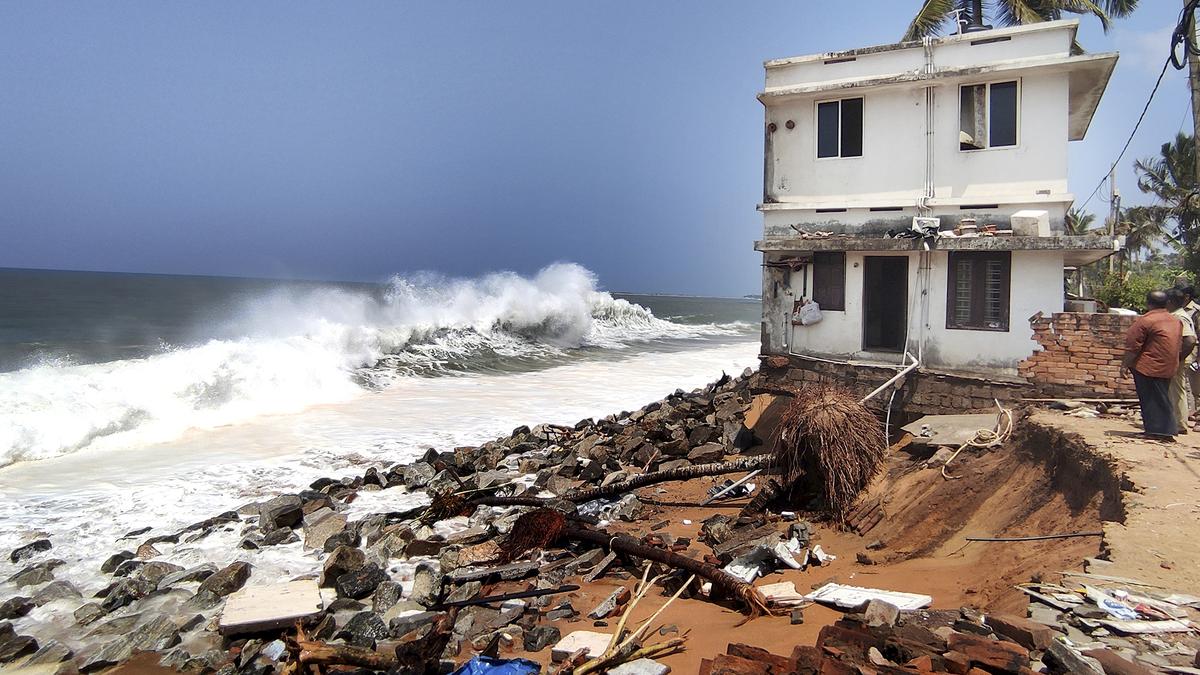
Kerala records 684 sea surge events in 12 years, says Kufos study warning of rising threat
The Hindu
Kufos researchers identify sea surge hotspots along Kerala's coastline, urging urgent action for coastal protection amid climate change.
Researchers at the Kerala University of Fisheries and Ocean Studies (Kufos) are seeing a notable rise in sea surge events, threatening vulnerable communities along the State’s 593-km coastline.
The study, which spans 2012 to 2023, provides a comprehensive analysis of the events, identifying key sea surge hotspots, and suggests essential management strategies for safeguarding the coastline.
The study recorded 684 sea surge events over the 12 years, with three-fold increase in recent years. “The rising frequency of sea surges is a clear warning about the escalating threats faced by Kerala’s coastal areas, driven in part by the intensifying impacts of climate change,” said Pradeepkumar T., Vice-Chancellor of Kufos.
“This growing threat demands immediate and sustained action to safeguard both our coastal communities and the delicate ecosystems that support them,” he said.
Alappuzha and Thiruvananthapuram districts recorded the highest number of sea surge events, with 134 and 121 incidents respectively, while northern districts such as Kannur and Kasaragod had much fewer occurrences, indicating varying levels of vulnerability across Kerala’s coast.
However, when sea surge events were standardised to the number of occurrences per 10 km, Ernakulam district recorded the highest density of sea surges. “This finding is particularly noteworthy as it challenges the common assumption that longer coastlines are inherently more vulnerable to sea surges,” said Shijo Joseph, Assistant Professor, Kufos and the lead author of the study. He emphasised the unique vulnerability of Ernakulam.
Using advanced spatial tools within geographic information system (GIS), the researchers mapped 11 primary sea surge hotspots at the State level, including Valiyathura and Pozhiyur in Thiruvananthapuram, Purakkad, Ambalapuzha, Arattupuzha and Punnapra in Alappuzha, Chellanam and Edavanakkad in Ernakulam, Eriyad and Edavilangu in Thrissur and Ponnani in Malappuram.

The Karnataka government has drafted a comprehensive master plan for the integrated development of Kukke Subrahmanya temple, the State’s highest revenue-generating temple managed by the Hindu Religious Institutions and Charitable Endowments Department. The redevelopment initiative is estimated to cost around ₹254 crore and aims to enhance infrastructure and facilities for devotees.












